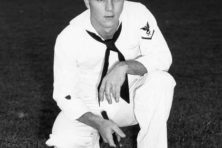Lessons from the Arnold Palmer Invitational
- Share
- Tweet
- Pin
- Share

The United States Golf Association (USGA) – and just about everybody else, for that matter – want to see faster play so that more people can enjoy their golf rounds.
This writer and golfer makes great efforts to keep himself and his group moving. Some of my habits include helping to track down playing partners’ wayward shots, fixing others’ divots and ball marks, encouraging everyone in the group to tee off when ready, leaving the pin in while putting, and letting people know I won’t mind if they finish putting out rather than placing a marker after each putt.
In February, for the first time, I went to a practice round at a PGA Tour event as a spectator, rather than to an official round as a fan or reporter. Having never followed a practice round, I was in for a surprise. During the Arnold Palmer Invitational at Bay Hill, I didn’t expect to watch a pro-am tournament that doubled as a practice day for the best golfers in the world.
Some of the tour pros had good luck with their grouping in foursomes along with businesspeople, celebrities and VIPs for their 18-hole Wednesday round. Rory McIlroy, for example, was paired with retired pitcher CC Sabathia, a six-foot-six southpaw who spent most of his 19 years in the Major Leagues with the Yankees, plus a legendary 2008 stint in Milwaukee.
McIlroy’s foursome members all seemed happy and satisfied after their round, and those team members, including Sabathia, showed enough golf skill and power to card lower scores than McIlroy on a few holes. (Note that the amateurs play from forward tees, and the pros tee off from way, way, way back.)
I followed Xander Schauffele, one of the top young golfers on the tour. Although I saw some of his pro-am teammates whack wayward shots deep into the rough on a few holes, they all picked up their ball (or just left it out of bounds, gone forever) when they realized they had no hope of getting a bogey, par or birdie and helping the team.

After the team putted out for birdie on hole #6, Schauffele hit a few extra shots from a bunker that could serve as a good target if he needed to bail out on an approach shot safely away from a water hazard. I was watching to see whether Schauffele had become frustrated by one golfer in his group who sliced a tee shot, hit a second shot into the rough and then plunked his third into the water after trying to hit a ball onto the green with a fairway wood from about 250 yards.
Instead, he smiled and joked around with the golfer. While Schauffele was signing autographs for spectators, the player told a spectator near the next tee how personable Schauffele was on the course.
A few groups back, I saw one amateur hit an awful tee shot and then talk with his caddie for what felt like an eternity before trying to hit a long iron from deep rough. After that shot went about 80 yards, he had about 300 yards left, a ball buried in deep grass and low-hanging tree branches in front of him.
By now, a pro I won’t name had walked up near the green. He looked over his shoulder at the struggling golfer. As the pro was becoming frustrated, his caddy got him back on track. He started dropping balls and encouraging him to work on 20-yard pitch shots, even though the amateur was back there, far out of range, taking more practice swings.
I think the hacker gave up after his fourth flail with a mid-iron left him 200 yards from the green. After his second shot, he should have picked up his ball, quit the hole and kept things moving and pleasant for his playing companions.
There’s a lesson here: During a casual round or even a PGA pro-am best-score-per-team-member event, if you’re out of position to post a decent score, pick up. Unless you’re in a stroke-play tournament, there’s no reason to hold up play if you start to butcher one hole.
In fact, golfers should consider signing up for a USGA or home-course handicap. In addition to helping players track their progress, or have a fair game or match with a friend, the handicap system allows for players to pick up and quit when they’ve made a mess out of one hole. The equitable-stroke-control system allows players to mark down a maximum-bad score and move on – for example, a 6 on a par-3 for a high handicapper, or a 5 on a par-3 for a more skilled, low handicapper.
The point: Move on from the disaster before making it more disastrous. Picking up can keep you from spoiling your day, and it can keep things fun and less aggravating for you and the group behind you.
The USGA lists many other ways to improve the pace of play, starting with showing up early, stretched out and ready to play; and choosing to play from tees that are comfortable for you. The USGA advises players to choose to “tee it forward” or to avoid playing from the back tees if they’re not going to be able to hit tee shots beyond obstacles or will have a hard time reaching greens in regulation – aka, getting the ball onto the green soon enough to still have two putts for par.
The USGA also advises groups to agree to hit consecutive putts on greens and to “hit when ready” rather than adhering strictly to “honors” on the tee for whoever had the lowest score on the previous hole. In addition, the USGA advises players to think about their shots before they arrive at the ball and while other players are getting set to swing, and to try to play their next shots within 20 seconds.
Something to think about before the summer golf season: Keep moving, and keep it fun.



